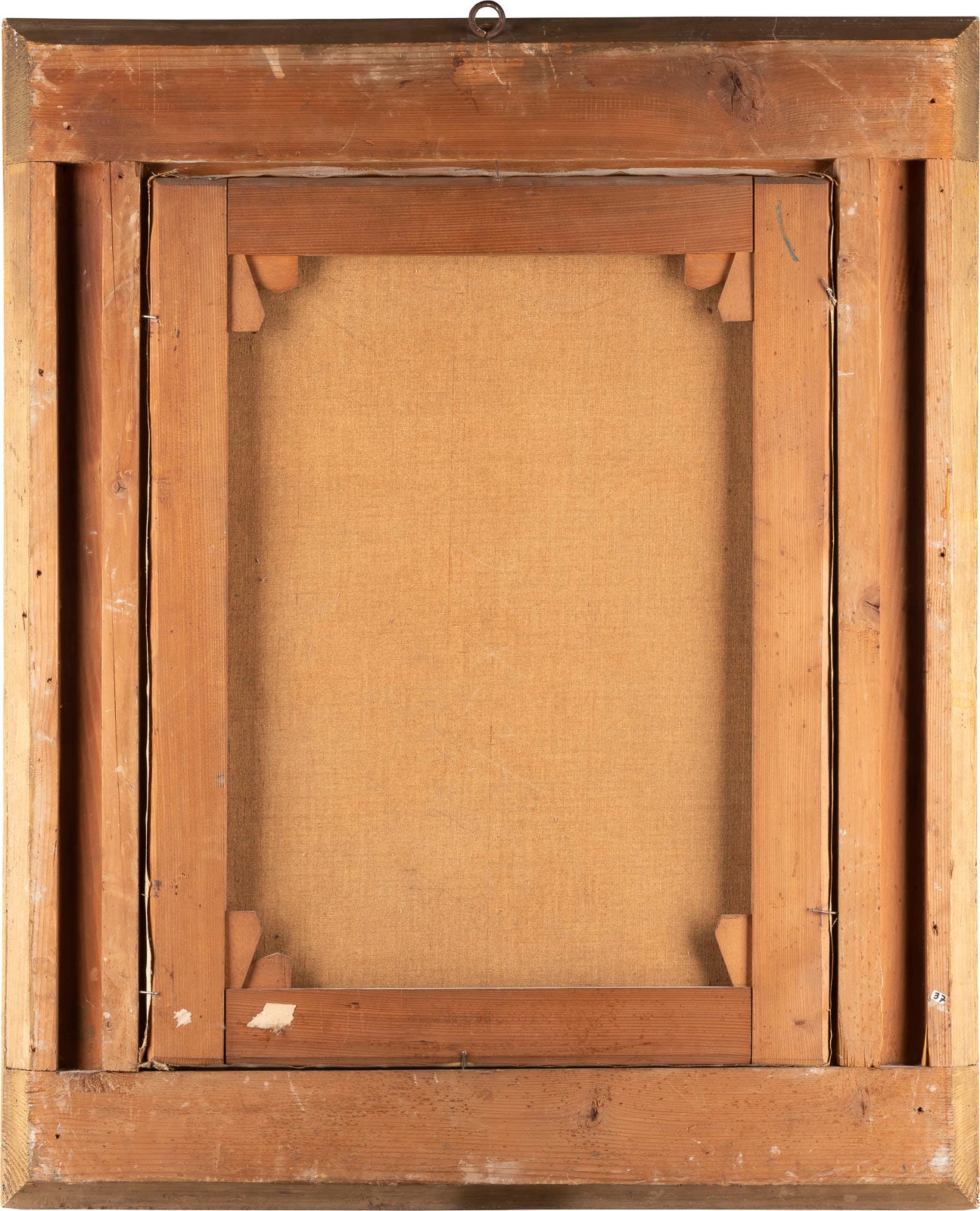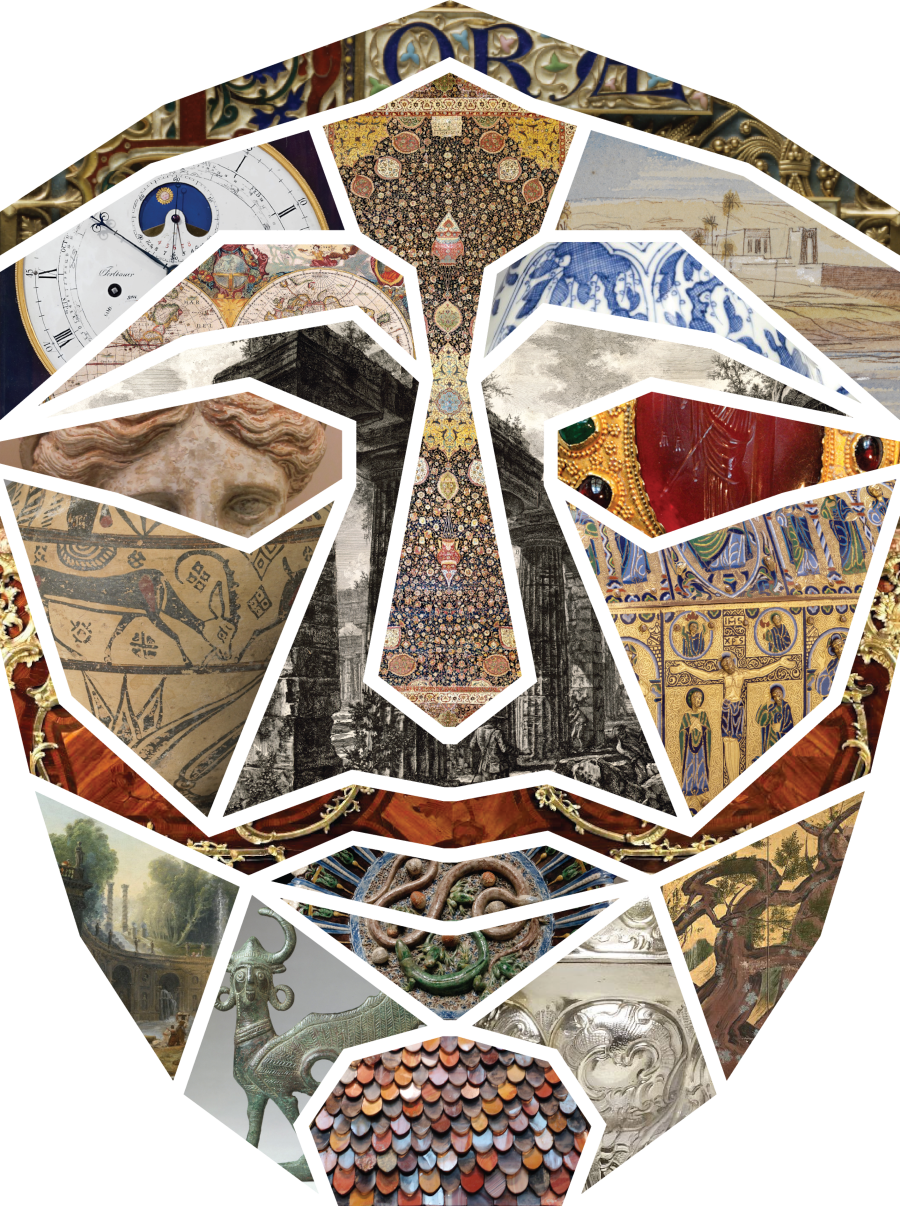My Store
Large Still Life Fruit Beetle Lizard Snail Bee - Follower Jacob Van Walscapelle
Large Still Life Fruit Beetle Lizard Snail Bee - Follower Jacob Van Walscapelle
Couldn't load pickup availability
Large Still Life With Fruit, Beetle, Lizard, Snail and Bee - Follower of Jacob Van Walscapelle
A magnificent and museum-quality large-format still life oil painting depicting an abundant arrangement of fruit with naturalistic details including a beetle, lizard, snail, and bee. Attributed to a follower of Jacob Van Walscapelle (1644-1727), one of the most celebrated Dutch Golden Age still life painters, this exceptional work demonstrates the sophisticated composition, meticulous detail, and naturalistic observation characteristic of the finest Dutch still life tradition. The painting's substantial size, accomplished execution, and fascinating inclusion of insects and reptiles make it a significant example of 17th/18th-century Dutch still life painting.
Jacob Van Walscapelle - Master of Dutch Still Life
Jacob Van Walscapelle (1644-1727) stands among the most accomplished Dutch Golden Age still life painters, particularly renowned for his flower pieces and fruit still lifes. Working in Amsterdam during the height of Dutch painting's golden age, Van Walscapelle developed a distinctive style characterized by luminous color, meticulous detail, and sophisticated compositions. His work was highly sought after by wealthy Dutch merchants and collectors who prized still life paintings as demonstrations of prosperity, scientific curiosity, and aesthetic refinement. Paintings by Van Walscapelle and his followers represent the Dutch still life tradition at its finest, combining technical virtuosity with symbolic depth.
Follower Attribution - School and Influence
The attribution "Follower of Jacob Van Walscapelle" indicates this painting was created by an artist working in Van Walscapelle's style and tradition, likely trained in his workshop or strongly influenced by his work. Such attributions are common in Old Master paintings and indicate the work demonstrates characteristic techniques, compositional approaches, and aesthetic qualities of the named master while not being definitively by his hand. Follower paintings often represent excellent quality and can be more accessible than works by the master himself, while still embodying the artistic tradition and technical excellence of the school.
Dutch Golden Age Still Life Tradition
This painting exemplifies the Dutch Golden Age still life tradition (roughly 1580-1720), when Dutch artists elevated still life painting to unprecedented heights of technical accomplishment and symbolic sophistication. Dutch still lifes combined meticulous observation of nature with complex symbolic meanings - fruit represented abundance and the fleeting nature of earthly pleasures (vanitas), insects and reptiles symbolized decay and mortality, while the overall composition demonstrated the painter's skill and the patron's wealth and learning. These paintings served multiple purposes: decorative objects, demonstrations of artistic virtuosity, scientific records of natural specimens, and meditations on mortality and the transience of earthly life.
Composition and Subject Matter
The painting features an abundant arrangement of various fruits - likely including grapes, peaches, plums, and other seasonal produce - composed with the sophisticated spatial organization and visual balance characteristic of finest Dutch still life work. The inclusion of naturalistic details - beetle, lizard, snail, and bee - adds layers of meaning and visual interest. These creatures were carefully observed and rendered with scientific accuracy, reflecting the Dutch Golden Age's fascination with natural history and the emerging scientific method. The insects and reptiles also carried symbolic meanings related to decay, transformation, and the cycle of life and death.
Technical Excellence - Oil on Canvas
Executed in oil on canvas, this painting demonstrates accomplished technique in the demanding medium of oil paint. The artist's handling of light and shadow creates three-dimensional form and atmospheric depth, while careful attention to surface textures - the bloom on grapes, the fuzz on peaches, the translucency of insect wings, the scales of the lizard - showcases extraordinary observational skill and technical control. The luminous color palette and sophisticated tonal relationships demonstrate complete mastery of oil painting technique and understanding of how light interacts with different surfaces and materials.
Large Format - Impressive Presence
Described as "large," this painting offers substantial size that creates commanding presence and allows for impressive detail and compositional complexity. Large-format still lifes were particularly prestigious commissions, requiring more time, materials, and skill to execute while creating greater visual impact in domestic or institutional settings. The substantial size allows viewers to appreciate the meticulous detail and naturalistic rendering that characterize finest Dutch still life work, while the painting's presence commands attention and creates focal point in any space.
Naturalistic Detail - Scientific Observation
The painting's inclusion of carefully rendered insects and reptiles reflects the Dutch Golden Age's passion for natural history and scientific observation. Dutch artists often worked from actual specimens, creating paintings that served as both art and scientific documentation. The beetle, lizard, snail, and bee would have been observed closely, their anatomical features and characteristic behaviors captured with accuracy that satisfied both aesthetic and scientific interests. This combination of artistic beauty and scientific precision distinguishes Dutch Golden Age still life from mere decorative painting.
Symbolic Meanings - Vanitas Tradition
Beyond their naturalistic beauty, the painting's elements carry symbolic meanings rooted in the vanitas tradition - artistic meditations on mortality and the transience of earthly life. Fruit, at the peak of ripeness, symbolizes abundance but also impending decay. Insects and reptiles, associated with decomposition and the earth, remind viewers of mortality. The bee, industrious and productive, might represent virtue and hard work. These layered meanings invited contemplation and demonstrated the patron's intellectual sophistication and awareness of life's deeper truths.
Condition and Preservation
As an Old Master painting potentially 300+ years old, condition assessment is crucial. The painting's current state, any restoration history, and structural integrity should be evaluated by conservation professionals. Many Dutch Golden Age paintings have survived remarkably well due to the durability of oil paint and canvas, though most show some age-related changes. Detailed condition reports available to serious collectors, documenting any restoration, overpainting, or structural issues.
Provenance and Authentication
Attribution to a follower of Jacob Van Walscapelle suggests scholarly examination and comparison with documented works by the master and his school. Comprehensive provenance research, technical analysis, and expert authentication available to serious collectors. Understanding the painting's history, previous ownership, and scholarly documentation enhances both historical interest and market value.
Investment Value and Market Position
Large-format Dutch Golden Age still life paintings by followers of documented masters represent solid investment opportunities. The combination of impressive size, accomplished execution, prestigious attribution, and the enduring appeal of Dutch still life painting creates strong market demand among collectors of Old Master paintings, Dutch art, and still life specialists. As authentic period paintings become scarcer and appreciation for Dutch Golden Age art remains strong, quality examples show consistent market performance.
Collecting Context
This painting appeals to collectors of Dutch Golden Age art, Old Master paintings, still life specialists, natural history enthusiasts, and those seeking museum-quality works with both aesthetic beauty and intellectual depth. It would enhance distinguished private collections, corporate holdings, institutional acquisitions, or serve as centerpiece in collections focused on Dutch art or still life painting.
Display and Presentation
A painting of this caliber and size deserves prominent placement in formal settings where its detail and presence can be properly appreciated. Ideal locations include dining rooms (traditional setting for still life paintings), libraries, formal reception rooms, or galleries. Professional lighting design recommended to reveal the painting's subtle tonal qualities and meticulous detail. Climate-controlled environment essential for long-term preservation.
Available for viewing by appointment at Artemisia Fine Arts & Antiques Ltd, Malta's premier gallery for Old Master paintings. We provide expert consultation, authentication services, conservation coordination, provenance research, insurance valuation, and international shipping with specialized fine art handlers. This represents an exceptional acquisition opportunity for collectors of Dutch Golden Age painting. Serious inquiries from qualified collectors and institutions welcome.
Share






